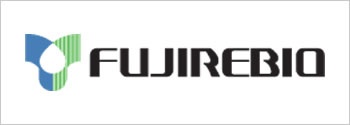General
- Tiredness
- Water retention
- General malaise
- Swelling
- Inappetence
- Increased sweating
Musculo-Skeletal
- Arthritis
- Joint pains
- Muscle pain and tremors
- Muscle weakness
Neurological and psychological
- Anxiety
- Depression
- Headache
- Migraine
- Poor memory
- Irritability
Dermatological
- Acne
- Eczema
- Psoriasis
- Urticaria
- Dermatitis
- Exanthem
Gastrointestinal
- Nausea
- Vomiting
- Abdominals Pain
- Stomach cramps
- Diarrhea
- Constipation
- Irritable intestine
- Belching
Respiratory
- Asthma
- Sinusitis
- Dyspnea
- Breathlessness
- Rhinitis
- Coughing and hoarseness
The IgG-mediated food intolerance test can be performed with two different methods: Immunoenzymatic (ELISA) and Microarrayt.
It allows the identification and dosage of antibodies of IgG class directed against different food antigens possibly present in the patient’s serum.
Once the test has been carried out, it is necessary to exclude all foods for which there is a strong intolerance.
during 3-6 months. Later it is possible to reintroduce them in the diet without further disorders.
IgG Food Allergy Test Mediated enzyme immunoassay based on the ELISA (Enzyme-Linked Immunosorbent Assay) method.Beta Diagnostici S.a.S. offers two different types of products depending on the number of food antigens to be tested.One of these kits (109 Mediterranean Food) has been specifically designed to group 109 foods of the Mediterranean diet. Some of these kits include homogeneous food mixes (adhered in a single well). For the composition, list, method and distribution of food on the plate, pdf documents are attached.
Kit 40 Foods
Corn, oat, rice, rye, buckwheat, cow’s milk, egg white, egg yolk, chicken, turkey, pork, cod, stockfish, plaice, crab, lobster, shrimp, carrot, bean, white bean, soy, pea, cabbage, broccoli , cauliflower, potato, apple, pear, raspberry, strawberry, blackberry, orange, lemon, grapefruit, almond, cashew, hazelnut, pine nut, yeast, brewer’s yeast.
Kit 109 Food – Mediterranean Diet
Artichoke, aubergine, fennel, broccoli, courgette, onion, mushrooms, cauliflower, cabbage, chicory, spinach, green bean, white bean, bean (broad), lettuce, potato, chickpeas, pea, pine nuts, lentils, cucumber, pumpkin, tomato, carrot, pepper , red pepper, paprika, chilli pepper, mustard, white pepper, black pepper, garlic, parsley, basil, caper, olive, sunflower seeds, sesame seeds, cola seeds, rice, oats, rye, barley, wheat, durum wheat , buckwheat, maize, gluten, brewer’s yeast, bread yeast, mussel, oyster, clam, prawn, shrimp, lobster, crab, sardine, anchovy, cuttlefish, squid, octopus, tuna, cod, sole, trout, hake, bass, salmon, apricot, peach, cherry, plum, strawberry, kiwi, lemon, cedar, apple, melon, orange, tangerine, pear, pineapple, banana, chestnut, white grapes, black grapes, watermelon, fig, almond, walnut, hazelnut, peanut, pistachio, egg white, egg yolk, cow’s milk, goat’s milk, sheep, cocoa, coffee, tea, honey, pork, rabbit, lamb, turkey, chicken, beef.
Genarrayt – ScanSystem – The new standard in Immunoassay
Genarrayt is the new, innovative detection system developed by the research and development department of Omega Diagnostic, for the determination of food intolerance (IgG), on microarray technique.
This system combines the simplicity of the ELISA method with the very high sensitivity of microarray technology.
Genarrayt allows a remarkable saving in terms of reagents and times.
Reliability: Genarrayt offers the possibility to obtain easily standardized results thanks to reduced operator intervention.
Savings: Genarrayt allows analyzing up to 64 patients simultaneously, on a panel of 221 foods, entirely selected on the basis of the Mediterranean diet, in just 2 hours.
Sensitivity: Generrayt guarantees a superior sensitivity compared to the analysis with the traditional method, through a software of data interpretation, simple and intuitive.
Determination for individual foods – Kit of 221 foods
Quantitative results – From standard curve U / ml
Time of execution – 120 ‘
Test – 4, 16 or 64 patients analyzed, with possibility of simultaneous execution
Automation – Genarrayt technology
The Genarrayt Microarray Anti-Food 221 IgG Test is a quantitative allergic test, which evaluates the direct reaction between IgG antibodies present in the patient’s serum, plasma or whole blood to 221 food allergens.
This allows to identify which foods cause the onset of food intolerances.
This test combines the simplicity and reliability of an ELISA test with the sensitivity of Microarray technology, also used in genetic analysis.
A robot immobilizes Food antigens (221) on a solid nitrocellulose support adhered to a slide. After analysis, the slide is processed by a very high-resolution (10 micron) scanner, with a sensitivity of about 30 times greater than a normal ELISA test, for data acquisition and processing.
The presence of a greater number of protein epitopes, allows a greater sensitivity and bonding capacity.
For greater safety in the results, food antigens are analyzed in “double”, and the value expressed for each food derives from an average of the values of the individual spots. In addition, the system is equipped with 16 Plot Controls, proper to the system, of Positive and Negative Controls, analyzed in triplicate, and of several Standards analyzed in sixfold.
In this way the analysis is efficient and reliable, minimizing the possibility of obtaining false positive or negative results.
The results frame is completed by a graph that contains a histogram of the average trend of the intensity of the values.
The result of the test is printed as a report: Food Print Report and it is divided into zones with different colours, in which are represented all the analyzed foods.
Foods with values above the preset limit value (cut-off) are also expressed with numerical values in the order of U / ml.
For the evaluation of the test, foods with values equal to or greater than 30 U / ml are considered positive (not tolerated) and clinically relevant.
| Test Interpretation Guide | Values expressed in U / ml | Interpretation |
| RED AREA | Values equal to or greater than 30 U / ml | NON-TOLERATED FOOD (Follow doctor’s instructions) |
| YELLOW AREA | Values between 24 U / ml and 30 U / ml | Possible development of intolerance (It is advisable to keep under control) |
| GREEN AREA | Values between 1 U/ml and 23 U/ml | NO REACTION
(NEGATIVE – No Detected Intolerance) |







